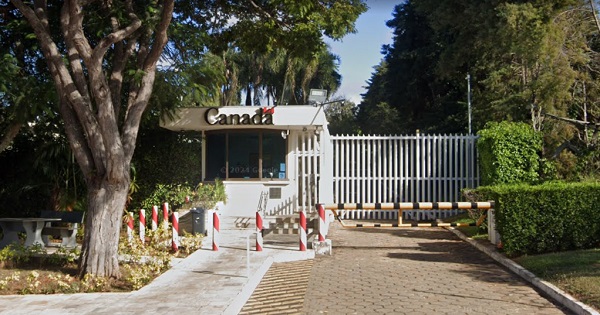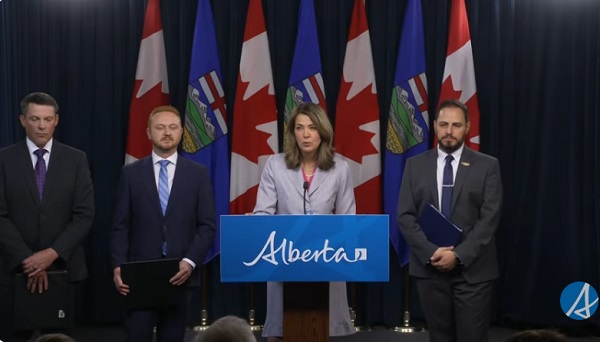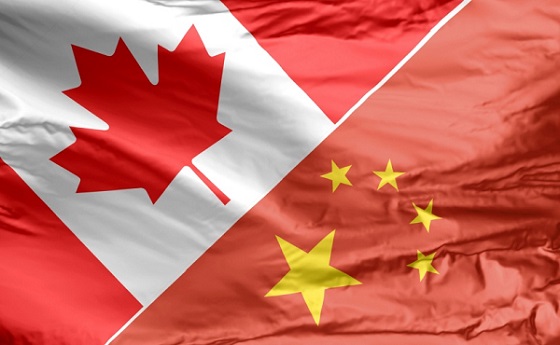Economy
Toronto, Vancouver named “Impossibly Unaffordable”

From the Frontier Centre for Public Policy
Two Canadian cities — Toronto and Vancouver — have earned the title of “impossibly unaffordable” in a new report.
“There has been a considerable loss of housing affordability in Canada since the mid-2000s, especially in the Vancouver and Toronto markets,” according to the Demographia International Housing Affordability report, which is released annually.
“During the pandemic, the increase in remote work (working at home) fuelled a demand increase as many households were induced to move from more central areas to suburban, exurban and even more remote areas. The result was a demand shock that drove house prices up substantially, as households moved to obtain more space, within houses and in yards or gardens.”
Vancouver was the least affordable market in Canada, and the third least affordable out of all of the 94 markets observed in the report. The West Coast city’s affordability issue has “troublingly” spread to smaller areas like Chilliwack, the Fraser Valley, Kelowna, and markets on Vancouver Island, per the report.
Toronto was named as the second least affordable market in Canada. However, it fared slightly better than Vancouver when it came to the other markets, ranking 84 out of 94 in international affordability.
“As in Vancouver, severely unaffordable housing has spread to smaller, less unaffordable markets in Ontario, such as Kitchener-cambridge-waterloo, Brantford, London, and Guelph, as residents of metro Toronto seek lower costs of living outside the Toronto market,” the report says.
The findings of the report have “grave implications on the prospects for upward mobility,” said Joel Kotkin, the director at the Center for Demographics and Policy at Chapman University, a co-publisher of the report along with Canada’s Frontier Centre for Public Policy.
“As with any problem, the first step towards a resolution should be to understand the basic facts,” he said. “This is what the Demographia study offers.”
The report looked at housing affordability in 94 metropolitan areas in Australia, China, Ireland, New Zealand, Singapore, the United Kingdom, the United States and Canada. The data analyzed was taken from September 2023. The ratings are based on five categories (affordable, moderately unaffordable, seriously unaffordable, severely unaffordable, and impossibly unaffordable) with a points system to classify each area.
The report determined affordability by calculating the median price-to-income ratio (“median multiple”) in each market.
“There is a genuine need to substantially restore housing affordability in many markets throughout the covered nations,” said Frontier Centre for Public Policy president Peter Holle, in a statement. “In Canada, policymakers are scrambling to ‘magic wand’ more housing but continue to mostly ignore the main reason for our dysfunctional costly housing markets — suburban land use restrictions.”
Toronto and Vancouver both received the worst possible rating for affordability, making them stand out as the most expensive Canadian cities in which to buy a home. However, other Canadian markets — like Calgary, Montreal and Ottawa-gatineau — stood out as well. They were considered “severely unaffordable.”
“This is a long time coming,” senior economist with the Canadian Centre for Policy Alternatives David Macdonald told CTV News.
“We haven’t been building enough housing, we certainly haven’t had enough government investment in affordable housing for decades, and the chickens are coming home to roost.”
The most affordable Canadian city in the report was Edmonton, which was given a rating of “moderately unaffordable.” The city in Alberta was “at least twothirds more affordable” than Vancouver.
Overall, Canada ranked third in home ownership compared to the other regions observed in the report. The highest home ownership rate was in Singapore, at 89 per cent, followed by Ireland, at 70 per cent. In Canada, the rate was 67 per cent.
First published in the National Post here, June 17, 2024.
Business
Carney government should retire misleading ‘G7’ talking point on economic growth

From the Fraser Institute
By Ben Eisen and Milagros Palacios
If you use the more appropriate measure for measuring economic wellbeing and living standards—growth in per-person GDP—the happy narrative about Canada’s performance simply falls apart.
Tuesday, Nov. 4, the Carney government will table its long-awaited first budget. Don’t be surprised if it mentions Canada’s economic performance relative to peer countries in the G7.
In the past, this talking point was frequently used by prime ministers Stephen Harper and Justin Trudeau and their senior cabinet officials. And it’s apparently survived the transition to the Carney government, as the finance minister earlier this year triumphantly tweeted that Canada’s economic growth was “among the strongest in the G7.”
But here’s the problem. Canada’s rate of economic growth relative to the rest of the G7 is almost completely irrelevant as an indicator of economic strength because it’s heavily influenced by Canada’s much faster rate of population growth. In other words, Canada’s faster pace of overall economic growth (measured by GDP) compared to most other developed countries has not been due to Canadians becoming more productive and generating more income for their families, but rather primarily because there are more people in Canada working and producing things.
In reality, if you use the more appropriate measure for measuring economic wellbeing and living standards—growth in per-person GDP—the happy narrative about Canada’s performance simply falls apart.
According to a recent study published by the Fraser Institute, if you simply look at total economic growth in the G7 in recent years (2020-24) without reference to population, Canada does indeed look good. Canada’s economy has had the second-most total economic growth in the G7 behind only the United States.
However, if you make a simple adjustment for differences in population change over this same time, a completely different picture emerges. Canada’s per-person GDP actually declined by 2 per cent from 2020 to 2024. This is the worst five-year decline since the Great Depression nearly a century ago. And on this much more important measure of wellbeing, Canada goes from second in the G7 to dead last.
Due to Canada’s rapid population growth in recent years, fuelled by record-high levels of immigration, aggregate GDP growth is quite simply a misleading economic indicator for comparing our performance to other countries that aren’t experiencing similar increases in the size of their labour markets. As such, it’s long past time for politicians to retire misleading talking points about Canada’s “strong” growth performance in the G7.
After making a simple adjustment to account for Canada’s rapidly growing population, it becomes clear that the government has nothing to brag about. In fact, Canada is a growth laggard and has been for a long time, with living standards that have actually declined appreciably over the last half-decade.
Business
Bank of Canada governor warns citizens to anticipate lower standard of living

From LifeSiteNews
“Unless something changes, our incomes will be lower than they otherwise would be.”
Bank of Canada Governor Tiff Macklem gave a grim assessment of the state of the economy, essentially telling Canadians that they should accept a “lower” standard of living.
In an update on Wednesday in which he also lowered Canada’s interest rate to 2.25 percent, Macklem gave the bleak news, which no doubt will hit Canadian families hard.
“What’s most concerning is, unless we change some other things, our standard of living as a country, as Canadians, is going to be lower than it otherwise would have been,” Macklem told reporters.
“Unless something changes, our incomes will be lower than they otherwise would be.”
Macklem said what Canada is going through “is not just a cyclical downturn.”
Asked what he meant by a “cyclical downturn,” Macklem blamed what he said were protectionist measures the United States has put in place such as tariffs, which have made everything more expensive.
“Part of it is structural,” he said, adding, “The U.S. has swerved towards protectionism.”
“It is harder to do business with the United States. That has destroyed some of the capacity in this country. It’s also adding costs.”
Macklem stopped short of saying out loud that a recession is all but inevitable but did say growth is “pretty close to zero” at the moment.
While some U.S. protectionist measures put in place by President Donald Trump have impacted Canada, the reality is that since the Liberals took power in 2015, first under former Prime Minister Justin Trudeau and now under Mark Carney, government spending has been out of control, according to experts. Rising inflation is rampant.
Canadian taxpayers are already dealing with high inflation and high taxes, in part due to the Liberal government overspending and excessive money printing, and even admitting that giving money to Ukraine comes at the “taxpayers’” expense.
As reported by LifeSiteNews, Carney boldly proclaimed earlier this week that his Liberal government’s upcoming 2025 budget will include millions more in taxpayer money for “SLGBTQI+ communities” and “gender” equality and “pride” safety.
As reported by LifeSiteNews, the Canadian Taxpayers Federation (CTF) recently blasted the Carney government for spending $13 million on promotional merchandise such as “climate change card games,” “laser pens and flying saucers,” and “Bamboo toothbrushes” since 2022.
Canadians pay some of the highest income and other taxes in the world. As reported by LifeSiteNews, Canadian families spend, on average, 42 percent of their income on taxes, more than food and shelter costs. Inflation in Canada is at a high not seen in decades.
-

 Business1 day ago
Business1 day agoYou Won’t Believe What Canada’s Embassy in Brazil Has Been Up To
-

 Censorship Industrial Complex1 day ago
Censorship Industrial Complex1 day agoSenate Grills Meta and Google Over Biden Administration’s Role in COVID-Era Content Censorship
-

 Business1 day ago
Business1 day agoMystery cloaks Doug Ford’s funding of media through Ontario advertising subsidy
-

 Environment1 day ago
Environment1 day agoThe era of Climate Change Alarmism is over
-

 Automotive1 day ago
Automotive1 day agoCarney’s Budget Risks Another Costly EV Bet
-

 Crime18 hours ago
Crime18 hours agoPublic Execution of Anti-Cartel Mayor in Michoacán Prompts U.S. Offer to Intervene Against Cartels
-

 Aristotle Foundation17 hours ago
Aristotle Foundation17 hours agoB.C. government laid groundwork for turning private property into Aboriginal land
-

 Justice17 hours ago
Justice17 hours agoA Justice System That Hates Punishment Can’t Protect the Innocent












